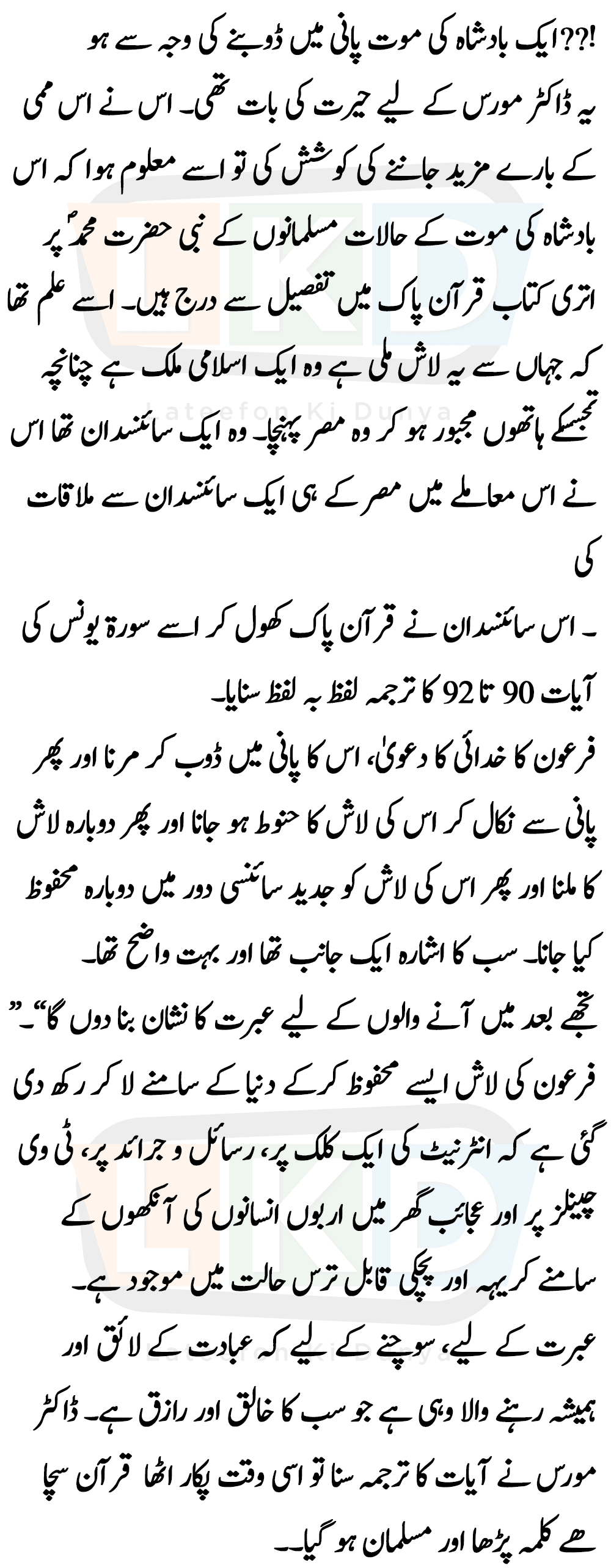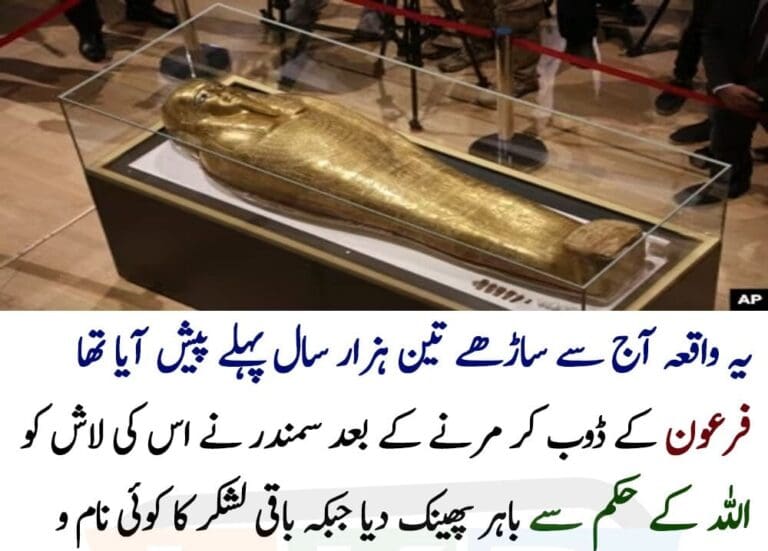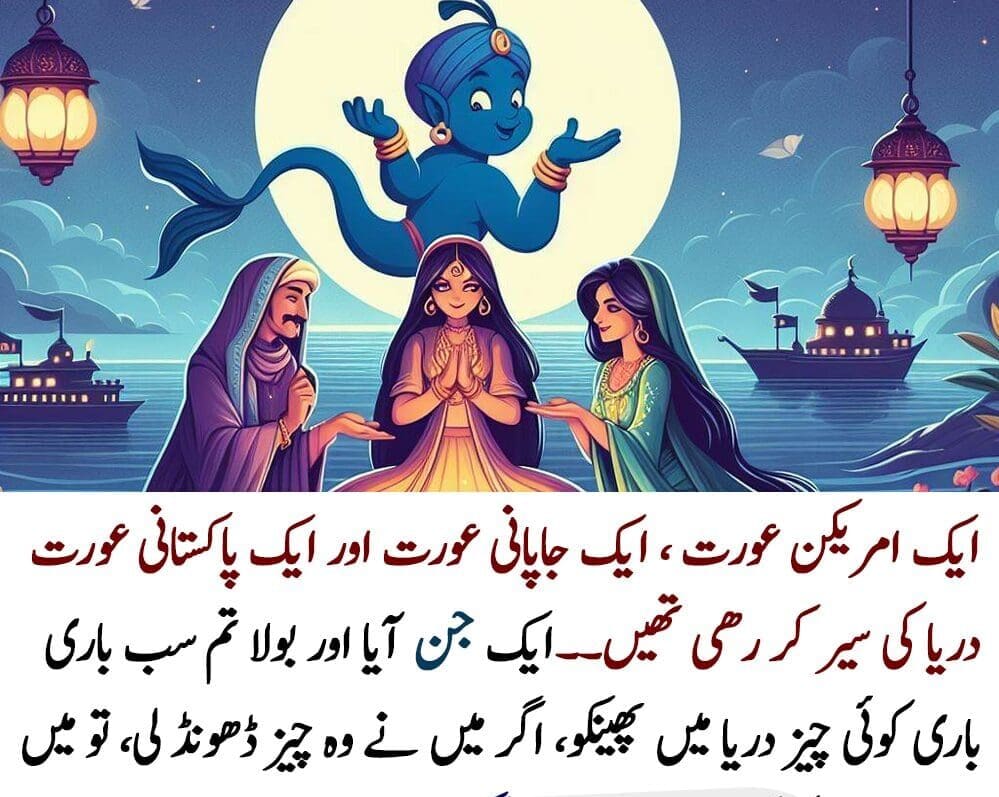This incident dates back more than three thousand years ago when Pharaoh met his demise, drowning in the sea as per Allah’s decree. The sea, following divine orders, cast his lifeless body ashore, while no trace of his army could be found. It was an Egyptian who, recognizing the body washed up on the shore, informed the royal court. Pharaoh’s body was carefully transported to the palace, where it was treated with respect and placed in a secure coffin during the embalming process. However, a mistake occurred during the embalming process.
READ IN URDU BELOW



Due to Pharaoh’s prolonged exposure to water after his death, a layer of marine salts had accumulated on his body. The Egyptians, unaware of this fact, left that layer intact, inadvertently preserving it during the mummification process.
As time passed, revolutions and upheavals swept across the world, burying many historical events beneath layers of history, including the mummified remains of Pharaohs. Even the meticulously embalmed bodies of the Pharaohs eventually disappeared into the depths of the Earth, their names living on only in books, structures, and the memories of people.
Two thousand years later, the final prophet of Allah, Prophet Muhammad ﷺ, arrived in this world. The Quran, the last revealed book, recounted the detailed stories of the Pharaohs, including the incident of Pharaoh’s drowning. In the same context, verses were revealed about preserving Pharaoh’s body as a sign.
Fast forward to 1871 in the city of Gourna, Egypt, a petty thief named Ahmed Abdul Rasool discovered a secret route leading to the hidden tombs of the Pharaohs. While engaged in his usual thieving activities, Ahmed stumbled upon a hidden path near the banks of the Nile, close to Thebes.
While digging in the vicinity, he unearthed the mummy of another Pharaoh in 1891, adjacent to the one discovered earlier. The name of this Pharaoh was inscribed on the shroud over his chest. The Egyptian authorities took the mummies to Cairo for further examination.
Scientific tests confirmed that, unlike other mummies, only Pharaoh’s body contained a layer of marine salts, affirming the authenticity of the Quranic account of his death. This revelation sparked worldwide interest, prompting experts in Egyptology and scientists globally to conduct extensive research on ancient artifacts.
In 1982, the deterioration of Pharaoh’s mummy led the Egyptian government to request assistance from the French government. The mummy was transported to France for preservation and further scientific analysis, aiming to determine the cause of his death. The French President and high-ranking officials welcomed Pharaoh’s mummy at the airport with great reverence, akin to the reception of a reigning monarch.
Under the supervision of Dr. Maurice Bucaille, a team of skilled doctors meticulously examined every aspect of Pharaoh’s body using advanced microscopic tests. The results confirmed the presence of marine particles in the mummy’s tissues, validating the Quranic account of his drowning and subsequent preservation.
The story of Pharaoh’s mummy stands as a testament to the divine message in the Quran, and its discovery in the modern scientific era emphasizes the miraculous preservation of a tyrant’s body as a timeless lesson for humanity. The incident raises profound questions about life, death, and the undeniable reality that the Creator is the ultimate authority over all existence.
This extraordinary event, connecting ancient history, Quranic revelations, and modern science, serves as a reminder for contemplation and reinforces the belief that true worship is reserved for the eternal and all-powerful Creator. Dr. Bucaille, upon hearing the translation of the Quranic verses, embraced Islam, recognizing the profound truth encapsulated in the words of the Quran.



